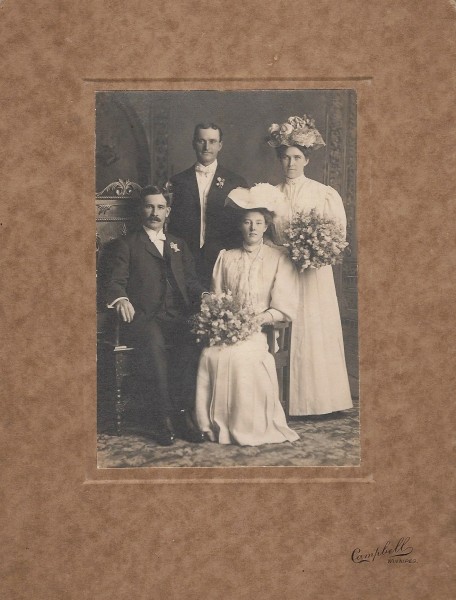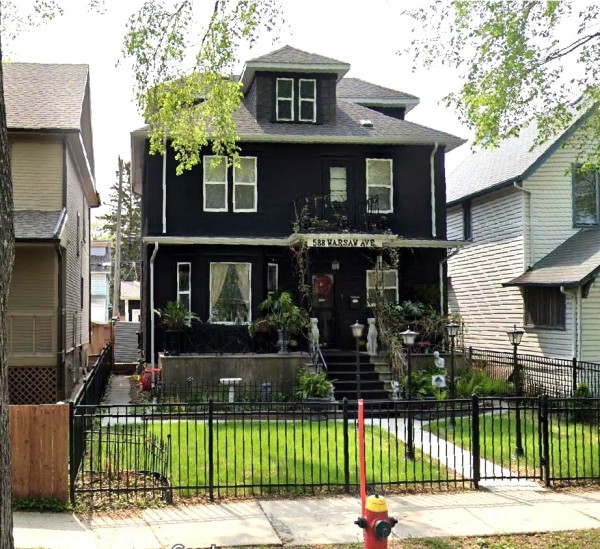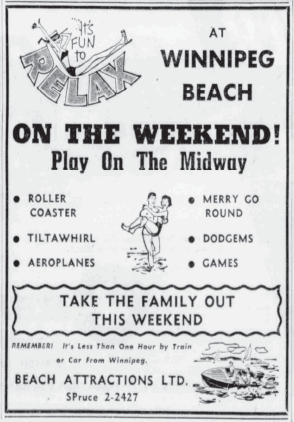James Cecil Hunt (1879-1937) worked a 30-year career as a Locomotive Engineer in Manitoba, Canada. He left his birthplace in Owen Sound, Ontario, at the age of 22, and headed west to Port Arthur (now Thunder Bay), Ontario. There he met and married Cassie (Catherine Elizabeth Grummett 1884-1966), a glamorous Winnipeg girl, at the age of 28. They raised their five children in Brandon, Manitoba, and eventually moved back to Winnipeg where they bought a house and stayed the rest of his life.


His first job as a “labourer” according to the 1901 Census might have been with the Canadian Northern Railway (CNoR). “The Canadian Northern Railway was incorporated (1899) as a result of the amalgamation of two small Manitoba branch lines. It was built up over the next 20 years by its principal promoters, William Mackenzie and Donald Mann, to become a 16,093 km transcontinental railway system.”
However, the competition with their transcontinental rivals proved to be insurmountable and Mackenzie and Mann were forced out of the company, which then became one of the first major components of the soon publicly owned Canadian National Railways (CNR).1
Cecil Hunt (second from the left) and other locomotive engineers posing in front of a First Class car.
After 18 years working up the CNoR ladder, Cecil’s career as a Locomotive Engineer began shortly after the June 1919 incorporation of the CNR, which then consisted of several other bankrupt railways belonging to the Canadian government.2 The CNR is the longest railway system in North America, controlling more than 31,000 km of track in Canada and the United States. It is the only transcontinental rail network in North America, connecting to three coasts: Atlantic, Pacific and the Gulf of Mexico.3
As a Locomotive Engineer, Cecil would have operated and controlled a locomotive engine (No. 73083.5 to be exact) that powered the train on railways. His responsibilities would have included controlling the speed, acceleration, and braking to ensure smooth and timely journeys as well as a thorough knowledge of the entire railway system, signals, and track conditions, all while adhering to strict safety regulations and protocols.4
- Cecil and children Allan, Lyndon, Holman and Beatrice circa 1916
- Cecil’s CNR Steam Engine no. 7308 (scrapped in November 1951)
According to the 1931 Census, Cecil at age 52 owned a three-story eight room stucco house at 588 Warsaw Avenue, in Winnipeg not far from the Red River, and made an annual salary of $3,200 ($65,000 in today’s dollars). Locomotive engineers easily make double that today.5

Cecil had obviously done well for himself since ten years before becoming a proud homeowner, he already owned a Model T Ford which, according to this photo, the whole family enjoyed!

Although, travel by car did not become common until the mid-1920’s, most people could take the “beach train” for their excursions to the famous nearby Winnipeg Beach. By 1912, ten trains took 40,000 vacationers to the beach each weekend.5.5




Winnipeg Beach had developed into an impressive amusement park – complete with a roller coaster, merry-go-round, and “moving picture house”. Over the years, more attractions were added, including bumper cars and an airplane ride. All this as well as the very popular dance pavilion and multiple arcades along the boardwalk. The “Moonlight Special” provided a round trip by train for 50 cents and a night of dancing could be purchased for another nickel. It is rumoured that “many generations of people owe their existence to the fact that their parents, grandparents or great-grandparents met on the ‘Moonlight’.”6

Winnipeg Beach: L to R – Beatrice, Sydney, Cecil, Cassie, Allan, Lyndon and Holman (notice the locker keys pinned to their bathing suits!)
In May 1937, Cecil and Cassie attended their son Allan’s wedding to Agnes Kirk (my husband’s parents). Allan worked his whole life in aviation with several airlines culminating in a 37-year career with Trans-Canada Airlines (which later became Air Canada) and my husband also had a 30-year career with Air Canada. Three generations of Hunts working in national transportation!
Shortly after that May wedding, Cecil suffered heart failure and Cassie nursed him at home until November when he died at age 58. The “weak heart” gene plagued all the Hunt men and continues to do so even to this day.
Tall stylish Cassie, however, lived almost another 30 years, and as a CNR widow, travelled with her train pass visiting her family from coast-to-coast every few years. After Cecil’s death, she lived for a while with her son Holman in the Slate River district near Thunder Bay, and then with her daughter Beatrice in Richmond, British Columbia until she died at the age of 82. Her obituary pays tribute to her lifelong commitment to the Order of the Eastern Star (part of the Masonic Family) both in Winnipeg and in Richmond.

The glimpse into the life of any ancestor makes writing about genealogy so gratifying … and the best part about this story is my husband getting to know a little about the grandfather he never met.
Please read my story about my husband and his father Allan Hunt:
1https://www.thecanadianencyclopedia.ca/en/article/canadian-northern-railway
2https://wiki2.org/en/Canadian_National_Railway
3https://www.thecanadianencyclopedia.ca/en/article/canadian-national-railways
3.5http://www.trainweb.org/j.dimech/roster/060ros.html#O-15-b
4https://www.careerexplorer.com/careers/locomotive-engineer/
5https://www.payscale.com/research/CA/Job=Locomotive_Engineer/Salary
5.5https://winnipegbeach.ca/p/our-history
6 Memories of the Moonlight Special and the Grand Beach Train Era – Barbara Lange




